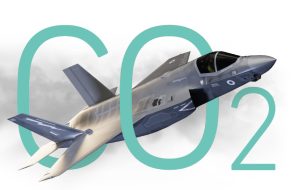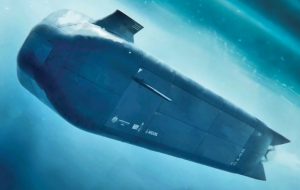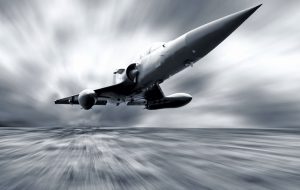Throughout history, technological advancements have been at the core of armies’ combat readiness development, surpassing the capabilities of the enemy, increasing operational efficiency, improving the quality of military commanders’ decisions, and enhancing awareness, communication, and connectivity in field conditions. These requirements have a profound impact on the structure of tactical communication networks, leading to the need for agile infrastructure, and high-bandwidth communications that are flexible and consistent to achieve secure connectivity.
Cloud computing has become a prominent topic of interest in recent years as a tool of technological advancement, to the extent that it has been referred to as the “emerging model of the past five years,” the “promising computing platform,” and the “dominant technology for the next ten years”.
Furthermore, many discussions have arisen regarding the new opportunities it can bring to markets, the benefits it can provide, and its potential for software development.
The underlying concept of cloud computing dates back to the 1960s when John McCarthy envisioned that “computation may someday be organized as a public utility.”
Moreover, the modern features we see today in cloud computing were reviewed in Douglas Parkhill’s book published in 1966, titled “The Challenge of the Computer Utility”.
These features include flexibility, availability as a public utility, and online availability through the Internet.
In addition, cloud computing experts in the U.S. Army are increasingly collaborating with their counterparts in the Air Force and Navy to access business data and battlefield information, even in remote locations.
The Concept of Cloud Computing
Cloud computing is the delivery of computing services, including servers, storage, databases, networks, software, analytics, and intelligence, over the Internet to provide faster innovation and more flexible resources, and reduce size which helps reduce operational costs, efficiently manage infrastructure, and scale according to mission needs and objectives.
Cloud computing could also be defined as an infrastructure where computing power and storage are managed by remote servers accessed by users through a secure internet connection, where desktop or laptop computers, mobile phones, touch screens, and other connected devices are used as access points to operate applications or view data hosted on the servers. Cloud computing is also characterized by its flexibility, allowing service providers to automatically adjust storage capacity and computing power according to user needs.
Cloud Computing … From Meeting Rooms to the Battlefield
Military spending remains one of the largest and most important sources of technological advancement in the world. One of the latest transformations revolves around cloud computing technologies and how intelligent systems are driving the defence industry forward. Due to its rapid deployment and integration capabilities, cloud computing has become capable of transforming modern military operations, allowing decision-makers to plan successful missions in the most challenging environments in the world.
Alongside instant data sharing, flexible security protocols, and advanced machine learning, cloud computing now represents a global trend in military research.
The private sector paved the way for cloud computing, and the US Department of Defence (DoD) capitalized on the available solutions and started to build the infrastructure for cloud computing nearly a decade ago. The US Armed Forces pioneered these modernization efforts to provide data to both combat and non-combat units within the military structure, achieving long-term efficiency, effectiveness, and cyber security goals.
Amidst a major transformation of the US Army’s approach to acquiring, building, and delivering technological capabilities to the theatres of combat, there lies a cloud-based infrastructure called “c Army” at the heart of these plans.
C Army enables communication, tool delivery, and sensor data, allowing commanders to have a clear digital picture of the battlefield and make faster decisive decisions.
The US Army established the Army Cloud Management Agency in 2019 as a relatively new organization focusing on cloud computing efforts for the Army.
Its areas of focus include cyber security, modern software development, data improvement, business system development, process adaptation, global expansion, and the expansion of cloud offerings for the Army.
The increasing dialogues between the Army, Air Force, and Navy come as the Department of Defence strives for joint command and control across all domains, envisioning rapid and accurate information exchange through land, air, sea, space, and the internet.
Cloud computing is considered the cornerstone of this ambitious infrastructure, and researchers expect a “very close integration between peers in the naval, air, and land forces and their respective cloud infrastructures.”
The military views cloud services and widespread secure usage as key components for the broader modernization of their networks, computers, and collaboration, thus the Army’s Cloud Computing Agency focuses on formulating those plans.
Paul Puckett, director of the Army Cloud Management Agency, stated that the agency’s priorities focus on identifying the true opportunity in the tactical realm to leverage cloud computing, then embarking on delivering truly mission-critical leadership as a service to the Army. The mission will drive significant investment in understanding and leveraging cloud computing capabilities outside the United States, linking the institution and tactical domains together within a unified network to create a global digital infrastructure.
The agency’s efforts align with the Army’s digital transformation plan, which outlines how the service uses technology to change the way it conducts operations and combat.
Consequently, Packett said, “The cloud will truly become the global digital infrastructure on which this mission is primarily executed, as promised by the Army’s Chief Information Officer, Raj Iyer, through technology policy transformations, primarily through the recently issued Digital Transformation Strategy and the Unified Network Plan composed of subcomponents.
Cloud infrastructure is a key element in many other modern defence strategies related to data, software updates and joint visions of command and control across all areas for which the Army shares some responsibility.”
What’s the role of Cloud Computing in Defence?
Defence agencies worldwide perform various functions ranging from intelligence gathering and field operations to disaster relief and collaboration with allies.
The success of these operations relies on accessing accurate and comprehensive data promptly. However, the increasing volume and complexity of available data, driven by technological advancements such as remote electronic sensing devices, cybersecurity, satellite surveillance, and unmanned aerial vehicles, create new challenges for defence agencies in managing and protecting information and effectively leveraging it in the digital age. These institutions require significant increases in storage capacity and analytical processing power. Cloud computing provides a way to manage mounting pressures and look towards the future, paving the way for digital defence strength in the future.
Whether public, government, private, or hybrid, each cloud computing model brings its own set of mobile and analytics-based defensive tools and capabilities that have a place within a modern defence agency.
For instance, the public cloud can be utilized for intelligence gathering or unclassified communications.
Furthermore, cloud computing is already being adopted to varying degrees by governments worldwide, and many defence agencies have cloud projects in the planning stages. For example, the U.S. Department of Defence recently launched a series of cloud initiatives aimed at improving mission effectiveness and cybersecurity in its reengineered information infrastructure.
Simultaneously, the UK Ministry of Defence has adopted a “cloud-first” approach and is deploying an online application for employees using the government’s G-Cloud program.
These investments are part of a broader trend among government entities seeking to harness cloud capabilities. A survey conducted by Accenture found that the majority of organizations (82%) worldwide identify cloud technology as a key component of their IT strategy and that 75% already implement or use at least one cloud application.
Accenture Defense Services has identified six comprehensive reasons behind the adoption of cloud computing by defence agencies and its continued rapid pace in the coming years:
1 Stronger IT Security and Cyberattack Resistance: To achieve maximum operational security, defence agencies have historically built “isolated” systems, with different branches of the military having completely separate resources for IT, however, cloud computing can enhance security by reducing the risks of individual errors or vulnerabilities while ensuring consistent security standards across the entire organization.
2 Doing More, Faster and Cheaper: Defence agencies already recognize the significant benefits of speed, cost, and agility offered by cloud technologies, including continuously aligning storage capacity with current needs. The cloud can also provide skilled IT personnel to perform higher-value activities by assisting in the automation of complex and repetitive tasks.
3 Seamless Global Data Exchange: Traditionally, defence agencies have sought to avoid sharing data with external parties, however, cloud computing can facilitate secure data transfer across missions and between forces and allies, thereby enhancing the ability to respond quickly and effectively while improving interoperability, collaboration, and operational efficiency.
4 More Secure and Efficient Supply Chains: Defence agencies manage complex and critical supply chains that integrate with mobility, analytics, and advanced sensing technologies. Cloud computing can significantly improve the efficiency and security of these processes, providing unprecedented control and visibility into the supply chain and reducing the risks of counterfeit goods and equipment.
5 Enhanced Situational Awareness: In the future, a combination of cloud, mobility, and analytics will elevate situational awareness to a new level. Data will be collected, shared, and accessed from a wide range of sources and devices before it is entered into portable cloud containers to support informed decision-making on the battlefield. Ultimately, this data can be used to improve situational awareness for defence agencies, whether at headquarters or satellite locations.
6 Integrated Global Identity and Access Management :The addition of advanced biometrics to the already robust combination of cloud, mobility, and analytics will enable defence agencies to automate and integrate identity and access management on a global scale.
All defence forces are taking steps to ensure the existence of a unified identity and access management to enable reliable access to information securely by individuals and partners across operational, support, and business domains. For instance, the ability to verify someone’s identity in real-time from anywhere in the world will enhance speed and security across all forces and geographic areas.
Cloud Computing Applications in Defence
Defence organizations have been building cloud computing infrastructure for nearly a decade, with the US military at the forefront of these efforts. This will ensure that data is available to both combat and non-combat organizations within the military structure, as the private sector has paved the way in cloud computing and defence ministries have benefited from available solutions.
Global Data has identified 9 key applications of cloud computing in defence:
1 Mobility: Mobility equals survival in modern warfare. Staying alive requires continuous movement of mechanized, armoured, airborne, and reconnaissance units during deployment and operation stages so that they can survive and win battles. This is particularly important when the enemy has advanced command, control, communications, and intelligence capabilities, enabling the detection and engagement of friendly forces. Therefore, front systems should provide cloud capabilities to units at a highly mobile tactical level. This is directly related to the features of the communication infrastructure available in each service, therefore, any plan to combat advanced cloud computing must first address any obstacles in the field of communications.
2 Electronic Warfare Concealment: Information technology systems emit electromagnetic signals. The larger these signals, the higher the likelihood of the target being attacked. Therefore, ships, aircraft, other major platforms, and most importantly, command sites, need to be able to continue operations uninterrupted while hiding from enemy surveillance. The best way to achieve this is by hiding within the existing electromagnetic noise in the environment. The US Army addresses this by using Wi-Fi in command centres and is researching the use of Light Fidelity (LiFi) in the future, which relies on Light Emitting Diode (LED) technology to transmit data between different information technology teams.
3 Security: Security in defence is crucial due to the sensitivity and importance of the data that can be stored in the cloud. However, security in contested environments, such as the battlefield, differs for several reasons, the most important of which is the lack of fixed infrastructure. Consequently, forces rely on different wavelengths for data transmission. This gives the enemy not only the ability to intercept and access the data but also the capability to jam and disrupt the transmission.
4 Standardization: Military forces need to develop the necessary branches, mission command systems, and applications that allow them to exchange information without obstacles. However, this process can be slow and costly, as communication protocols evolve to include the latest advancements. Furthermore, upgrading communication infrastructure on major platforms is expensive and time-consuming, especially when this capability is not taken into account during the initial design. Therefore, military forces must wait for platform replacements to obtain newer designs with advanced communications and standardized command and control interfaces.
5 Localization: Due to data security concerns, military organizations initially developed their own cloud solutions for infrastructure that would be under their physical control. This is also related to the limited geographic deployment of data centres by service providers. Once service providers invest in building data centres within client borders, cloud computing expansion becomes faster.
6 Coalition Operations: Expanding the use of cloud computing at the tactical level creates coordination problems among allied forces. Therefore, the latter must expand their cooperation by creating common interfaces and approaches, solving any access-related issues arising from technical specifications in their communication systems and operational approach, to ensure the effectiveness of their procedures.
7 Data Analysis: Since data is at the core of cloud computing, an increase in data analysis requirements from sensor devices should be expected. In other words, sensor devices or the core systems that integrate them should perform part of the overall analysis on board before sending it to another command and control node, where other users can conduct further mission-relevant analysis.
8 Virtualization: When it comes to sharing data between modern and legacy systems, multi-core processors and virtual simulation can help run old and new encoding systems while providing separation between different functions for security reasons.
9 Size, Weight, Power, Cost (SWaP-C): Size, weight, power, and cost remain essential elements in the design of systems and subsystems. The increase in data volume will lead to an increase in the size and weight of systems and platforms, as well as an increase in their computational power, resulting in higher cooling and power requirements. All of this will increase costs for the end user.●
Military Applications of cloud computing













